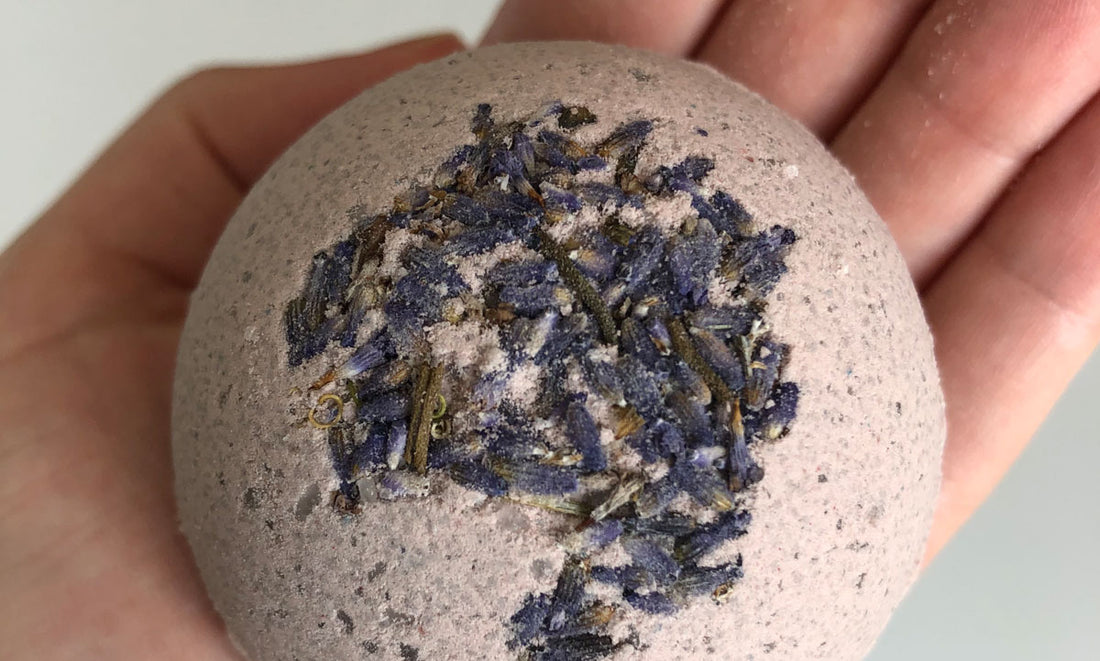
Crafting with Lavender Buds + Avoiding a Lavender Craft Disaster
Lavender can be used in so many different ways. It’s a multipurpose item for your crafting toolbox. Most often it is used in potpourris, bath and body items, recipes and self-care products. We, of course, sell many of these items, but you can also try making them at home yourself.
The internet has an endless supply of ideas of how use can use lavender. I’ve linked to some instructions below for some of the most popular lavender crafts.
Plus, below, I've included some tips to help you avoid a lavender crafting disaster.
- Sew a lavender sachet
- Mix up a lavender tincture
- Blend your own lavender tea
- Make lavender bath salts
- Sew a lavender eye pillow
- Infuse oil with lavender
- Mix up some lavender linen spray
How Avoid a Lavender Craft Disaster
I’ve had many Pinterest fails where I expected DIY magic and ended up manufacturing junk. Lavender has many wonderful properties and uses, but it is not immune to a Pinterest/crafting fail.
Probably the worst crafting disaster I had featured lavender. I found a beautiful idea online using old candles and dried lavender buds. A blog post instructed me to add a new wick to old glass jars, then to melt old wax candles and sprinkle dried lavender buds throughout. To finish off the candle, I sprinkled more lavender buds on top.
Honestly, the candles looked great. But they were also a terrible fire hazard. As the candle burned, the buds caught fire. Like lit up in flames. In fact, the buds burned so hot the flames escaped the jar and the glass jars cracked. Not ideal.
To save you from your own lavender craft disaster, here are some tips and tricks:
-
Don’t add lavender buds to candles.
It’s just safer that way. See above ;)
-
Keep dried lavender out of sunlight.
Direct sunlight will bleach dried lavender. To preserve the colour of the buds and stems, keep them out of sunlight as much as you can. A big benefit of dried lavender is that it doesn’t need sunlight, so featuring it in rooms without much light is a perfect fit.
-
Cook/bake with culinary-grade lavender.
Craft lavender buds and culinary lavender buds are different. First off, different cultivars (or types) are better suited for culinary uses and will taste more delicious. Think herbaceous and sweet vs bitter and soapy. Culinary buds are also harvested, dried and packaged in a food-safe manner.
-
Use dried lavender (rather than fresh).
As lavender dries it shrinks and changes shape. This is why it is best to use dried lavender when making a wreath, crown or something that needs to hold its structure. Dried lavender holds its shape and is predictable, so what you create will stay looking that way. Dried lavender is also safer to use when infusing oil or tinctures, as it is less likely to develop mould. Fresh lavender will also add colour to your mixture, which will go brown over time.
-
Dilute lavender essential oil.
I often get questions about using lavender essential oil for skin conditions, sunburns, etc. We don’t currently make essential oil, so I am not and expert, but I do warn folx to be cautious. Especially if you have sensitive skin. Essential oil is VERY concentrated and should always be diluted with a carrier oil (such as coconut or olive oil). Do your research and talk to a doctor or skin care professional before using lavender essential oil on your skin.
-
BONUS: Remember, bees like lavender.
All pollinators, including bees and wasps, love lavender. Even when lavender is dried, they will sniff it out and come a buzzing. If someone in your family is allergic to bees, be cautious about where and how you use lavender.
What have you crafted with lavender? How did it go? Would love to hear about the good, bad and ugly in the comments section below.
xo - Stephanie
